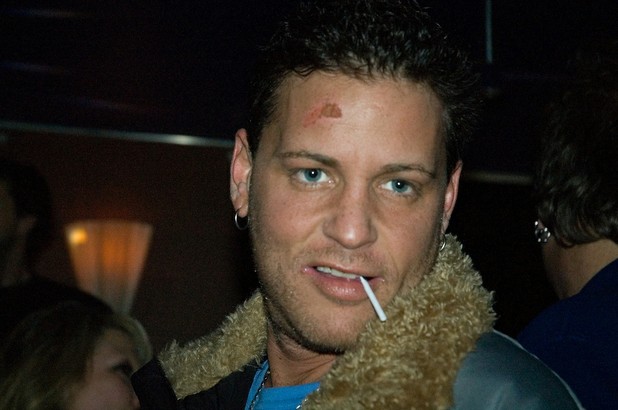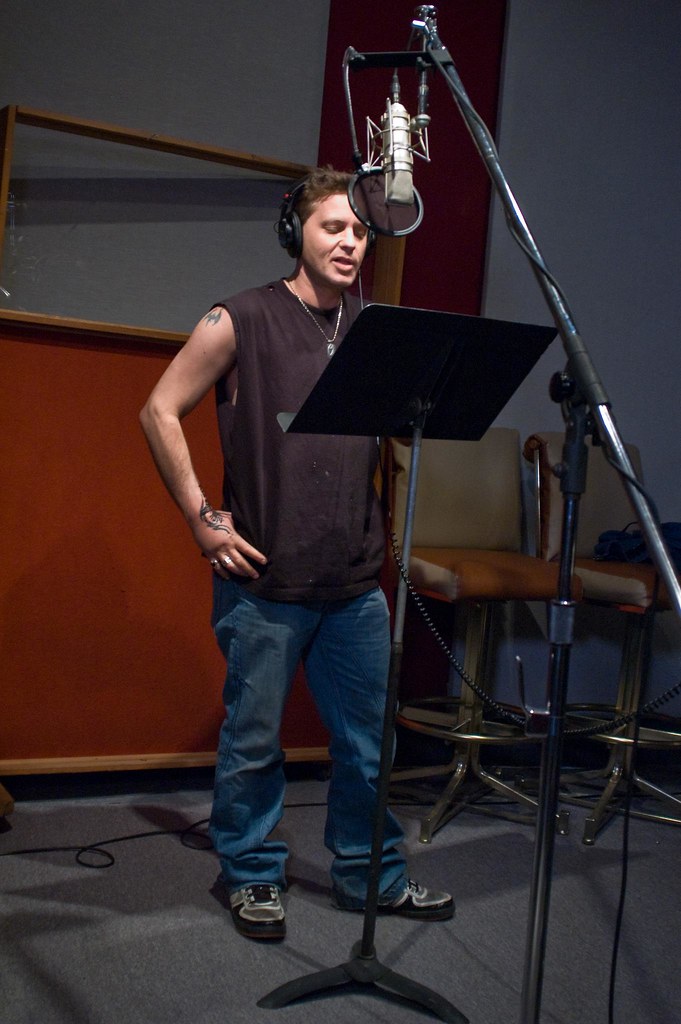
The news of Corey Haim’s death on March 10, 2010, sent shockwaves through those who had grown up watching him on screen. At just 38 years old, the actor, known for his roles in popular 1980s films like “The Lost Boys” and “Lucas,” was found unresponsive in the apartment he shared with his mother in Los Angeles. Given Haim’s publicly acknowledged struggles with drug addiction throughout much of his life, initial speculation and many early reports quickly focused on the possibility that his death was the result of a drug overdose. This assumption cast a dark and ominous shadow over the situation, seemingly fitting a narrative many had come to expect.
However, the official findings that emerged from the coroner’s office and subsequent autopsy report presented a different, less speculated-upon cause for the untimely death. The Los Angeles Police Department initially opened a death investigation and Haim was rushed to St. Joseph Hospital in Los Angeles where he was pronounced dead. While investigators initially believed a suspected overdose might be the cause, the detailed medical examination and toxicology tests would ultimately point away from this conclusion. The results provided a medical professional’s scientific opinion on what caused the actor’s physical end, offering crucial details that countered the immediate rumors and assumptions that circulated widely in the wake of his passing.
According to CNN reporting in May 2010, after the autopsy and toxicology results were returned, Corey Haim’s death was officially attributed to pneumonia. This finding starkly contrasted with the widespread belief that addiction had finally claimed his life directly through an overdose. The coroner’s report specifically stated that toxicology tests “revealed no significant contributing factors” from drugs to his death. This official ruling marked a pivotal moment in understanding the circumstances surrounding March 10, 2010, shifting the focus from substance abuse as the immediate trigger to a natural disease process as the cause.

The autopsy report provided specific medical details backing this conclusion. It found “an extremely large amount” of swelling in Haim’s lungs. This significant swelling indicated severe respiratory distress, which ultimately proved fatal. Early autopsy results had speculated Haim might have died from pulmonary congestion, described by Mayo Clinic via The Los Angeles Times report as a build-up of fluid in the lungs, sometimes caused by congestive heart failure. Haim’s lungs were indeed noted to be seriously enlarged during the autopsy, a finding consistent with the diagnosis of pneumonia and related respiratory complications.
In addition to the severe lung issues, the autopsy uncovered other significant physical findings. The report noted that Corey Haim had an enlarged heart when he died. The Los Angeles Times reported it was nearly twice the expected size. An enlarged heart can be caused by various reasons, including high blood pressure or other heart diseases, according to Mayo Clinic information referenced in the reporting. Furthermore, many of Haim’s blood vessels were heavily blocked, and his liver was also found to be enlarged. These findings painted a picture of underlying health issues alongside the acute respiratory condition.
The initial police report had listed Haim’s probable cause of death as cardiopulmonary arrest. This occurred after he collapsed, became unresponsive, and was no longer breathing in the apartment. Cardiopulmonary arrest refers to the abrupt loss of heart function, breathing function, and consciousness. While this was the immediate event leading to his death, the autopsy determined the underlying cause that led to this arrest was the severe pneumonia and related complications, along with the contributing factor of an enlarged heart.
The toxicology report, which was highly anticipated due to Haim’s history, did reveal the presence of several substances in his system, but their levels were deemed insignificant regarding the cause of death. Haim’s blood had “low levels” of a list of drugs. These included a cough suppressant, an antihistamine, and ibuprofen, which are commonly used for treating cold or flu-like symptoms – symptoms Haim had reportedly been experiencing in the days leading up to his death.

Beyond these common over-the-counter or less potent medications, the toxicology report also found low levels of several prescription drugs. These included Prozac, which is an antidepressant, Olanzapine, an antipsychotic medication, diazepam (Valium), a tranquilizer, Carisoprodol (Soma), a muscle relaxant, meprobamate, another tranquilizer, and THC, the psychoactive ingredient in marijuana. The presence of these substances in his blood was noted in the autopsy report.
Crucially, the autopsy report included a definitive statement regarding the role, or lack thereof, of these drugs in Haim’s death. Deputy Medical Examiner Juan M. Carrillo wrote in the report, as quoted by The Los Angeles Times and CNN, that “The medications did not contribute acutely to his death, therefore the manner of death is natural.” This professional medical conclusion explicitly ruled out drug intoxication or overdose as the direct cause, reinforcing the finding that pneumonia was the primary factor. The “natural causes” classification, as explained in context referencing Dr. David R. Fowler, president of the National Association of Medical Examiners, simply means ruling out external causes like suicide, accident, or homicide, attributing death instead to a natural disease process like infection or heart disease.
The days leading up to Corey Haim’s collapse and death were detailed by his mother, Judy Haim, to police. The two lived together in the Los Angeles apartment where he died. She told authorities that on March 8, 2010, two days before he passed away, her son informed her he was sick and wasn’t feeling well, complaining of a headache and fever. The next day, March 9, he did not get out of bed and was coughing frequently throughout the day. His mother brought him tea and vegetable soup, believing he was getting better, despite the symptoms.

On the morning of March 10, around 1:30 a.m., Haim’s mother fell asleep alongside him in the apartment. She woke up when Haim rose from the bed. Upon returning to his bedroom, she witnessed him slump to his knees. He then became unresponsive and was not breathing. It was at this point that she called 911 and was instructed to administer CPR. Despite her efforts and the subsequent rush to the hospital, Corey Haim was pronounced dead at 2:15 a.m. at Providence St. Joseph Medical Center.
In her account to the police, Haim’s mother stated she believed her son was not getting “high” because he had a fever of between 99 and 101 degrees, according to the autopsy report. She described that when he became unresponsive, he began to shake and his eyes rolled back. The report also added that there was no history of suicidal thoughts or suicide attempts for Corey Haim, and no suicide note was found at the scene. These details from his mother and the police report provide a timeline of his final moments and shed light on the immediate circumstances as witnessed by his closest family member.
Long before the official toxicology results were released, those closest to Corey Haim publicly insisted that his death was not due to a drug overdose. Corey Feldman, his lifelong friend and frequent co-star, stated on the Wendy Williams show, and recalled telling Larry King, that he knew Haim did not overdose, saying, “I knew him better than anyone. Believe me, I would know.” He specifically countered the rumors, stating, “No, he did not overdose. He actually died of pneumonia and an enlarged heart. But the rumor that came out when he died was that he had overdosed. But the truth of the matter, he did not overdose.”
Haim’s mother, Judy Haim, also maintained that her son had not died from a drug overdose before the toxicology tests confirmed this. Similarly, Haim’s manager, Mark Heaslip, told CNN in 2010 that Haim was in a program for drug addiction at the time of his death and “was making major progress” in a program to wean him off pills. Heaslip did note that Haim would sometimes threaten to find doctors to prescribe him drugs when his primary physician wouldn’t give him what he wanted, stating, “I would be the only one who could talk him out of it.” This indicated ongoing struggles but suggested a path toward recovery was being attempted.

Despite the clear ruling from the autopsy and toxicology reports, the connection between Corey Haim and prescription drug issues remained a point of focus for officials. Then-California Attorney General Jerry Brown used Haim’s death to publicize his enforcement efforts against illegal prescription drug use and “doctor shopping.” Doctor shopping refers to the practice of obtaining large amounts of prescription medication from different doctors and pharmacies, a method Haim was reported to have used, gathering over 500 pills using this method in the months prior to his death, according to state investigators.
At a news conference, Brown unfortunately referred to Haim as “the poster child” for the problem of addicts obtaining addictive prescription medications in this manner. State investigators stated they found Haim had obtained Vicodin, Valium, Soma, and Xanax just five days before he died. Brown launched an inquiry into Haim’s alleged “doctor shopping,” stating that seven doctors had given him prescriptions for four controlled substances in the last 10 weeks of his life. While bottles of prescription medication were found in Haim’s apartment, they were reportedly nearly empty and emptied by his mother. It is worth noting that the specific drugs mentioned by Jerry Brown as being obtained shortly before his death (Vicodin, Soma, Xanax) were reportedly not listed in Haim’s postmortem report, although Valium was found at low levels. One person was arrested in connection with supplying the actor with illegal prescription medication, but not in connection with his death.
The official autopsy report, therefore, stands as the definitive medical account of Corey Haim’s death. It systematically ruled out the immediate, assumed cause of death based on his known history and instead highlighted severe respiratory illness and underlying health conditions as the true culprits. The details provided within the report regarding his lungs, heart, and other organs, coupled with the toxicology findings and the specific determination that the low levels of drugs present were non-contributory, paint a factual picture grounded in forensic science. While the narrative of addiction loomed large, the official record tells a different story for the specific day he died, a story of natural causes stemming from physical ailments. The comprehensive nature of the examination aimed to provide clarity amidst the speculation, offering a factual foundation for understanding the tragic end of the actor’s life.

While the autopsy provided a clinical explanation for Corey Haim’s physical demise, the full story of his life and untimely death at 38 is deeply intertwined with the world he inhabited and the struggles he faced. Haim’s journey began far from the bright lights of Hollywood, born on December 23, 1971, in Toronto, Canada, to Judy and Bernie Haim. Following his parents’ divorce in 1982, he moved with his mother to Willowdale. Described as a fairly shy child, his mother’s decision to enroll him in drama, improvisation, and mime classes proved fortuitous, helping him overcome his shyness and setting him on a path toward acting.
His talent was quickly recognized. While his sister was auditioning, producers for the educational comedy series *The Edison Twins* noticed the ten-year-old Corey and offered him a role. Though the show filmed for only two years between 1984 and 1985, it effectively launched his career, putting the young star on the map. This early success was soon followed by roles in films like the thriller *Firstborn*. Cast alongside Peter Weller, the 13-year-old Haim played a boy living with his mother’s violent boyfriend. An unsettling incident occurred on the first day of shooting when Haim complimented Weller, a method actor, on his performance. Weller reportedly screamed at Haim in response and threw him against a wall, requiring three assistants to separate them. Weller later apologized, attributing it to method acting, but the event terrified Haim and left a lasting impact.

Despite this early trauma, the young actor persevered, landing roles in other notable films such as *Secret Admirer*, *Murphy’s Romance*, and Stephen King’s *Silver Bullet*. His true breakout arrived in 1986 with *Lucas*, where he played the titular role. Co-starring with Kerri Green, Charlie Sheen, and Winona Ryder, the film saw the 14-year-old Lucas fall for an older cheerleader, a crush that reportedly mirrored Haim’s real feelings for Kerri Green, who turned him down. Haim later credited this real-life heartbreak with inspiring his performance. Film critic Roger Ebert praised his work, writing, “He creates one of the most three-dimensional, complicated, interesting characters of any age in any recent movie. If he can continue to act this well, he will never become a half-forgotten child star, but will continue to grow into an important actor. He is that good.” Tragically, it was during the filming of *Lucas* that Haim reportedly began drinking regularly, even on set.
Then came 1987 and *The Lost Boys*, the film that would forever link him with his soon-to-be best friend, Corey Feldman. This period also marked Haim’s first experience with marijuana. As his success climbed, so too did his dependence on drugs. Looking back, Haim commented on the environment he found himself in, stating, “I lived in LA in the 1980s, which was not the best place to be.” He described a swift descent, saying, “I did cocaine for about a year and a half, then it led to crack.” By 1988, while filming *License To Drive* with Heather Graham and Corey Feldman, Haim admitted he had completely lost control of his drug addictions. He hit a low point, even asking high schoolers where he could buy crack. A year later, at the age of 18, acknowledging he had gotten “out of whack,” he entered rehab. Corey Feldman also struggled with significant drug use during this time, known for smoking heavily and engaging in “coke-off” challenges.

It was Corey Feldman who would later become a prominent voice alleging a darker side to their 1980s Hollywood experience, particularly concerning sexual abuse. In his autobiography *Coreyography*, Feldman claimed he was molested for years by older men in the entertainment industry. He also wrote that early in their friendship, Corey Haim shared similar stories, fostering a strong bond between them based on mutual trauma. Feldman later spoke to *People Magazine* about the abuse, explaining his decision not to name names to protect Haim’s mother from further pain. He spoke of powerful individuals still working in the industry who did not want him to speak out, saying, “There are people that did this to me and Corey that are still working, they’re still out there and they’re some of the most rich and powerful people in this business. And they do not want what I’m saying right now. They want me dead.”
Feldman further elaborated on these allegations in his documentary film, *My Truth: The Rape of Two Coreys*. Among the claims presented was an assertion that Haim had once told Feldman he was raped by Charlie Sheen on the set of *Lucas*, when Haim was 13 and Sheen 19. Sheen’s publicist denied this allegation. Adding another layer of complexity, Haim’s mother, Judy Haim, appeared on *The Dr. Oz Show* in 2017, alleging that it was not Sheen but actor Dominick Brascia who had raped her son. Brascia also denied the allegations. These public statements and accusations brought the troubled childhoods and alleged traumas of the two Coreys into stark relief.

In the years leading up to his death, Corey Haim seemed to hint at some of the issues Feldman would later detail. On the A&E reality series *The Two Coreys* in 2007, Haim directly addressed a “rape incident,” stating his rapist had been an acquaintance of Feldman’s. He reflected on the lasting impact, saying, “I have come to terms with this a long time ago, but obviously not [totally]. Stuff happens when you are a kid, it scars you inside for life.” The series also touched upon their lives as young teens, living lavishly and attending parties. A specific notorious hangout was their weekly underage party night, Alphy’s Soda Pop Club. Feldman later claimed that high-level Hollywood pedophiles would visit the club to rape and intimidate the teenage actors. While Haim never directly addressed these specific abuse allegations related to the club, he did acknowledge its contribution to his addiction, remarking, “By the end, it was dying out and everyone was on drugs. I was on drugs, Feldman was on drugs. At the end of it, we were 16 or 17 years old!”
Unfortunately, Corey Haim never fully escaped the grip of his addictions, leading to a spiral of debt, isolation, and desperation. By the early 2000s, acting work had significantly decreased, and he filed for Chapter 11 bankruptcy. He referred to this period as an “eight-year hiatus,” during which he effectively hid away and battled an “addiction to pretty much everything.” His struggles led to hospitalizations for drug issues twice in 2001. The second time, his mother discovered him unconscious at home in Los Angeles. Facing mounting hospital bills and a desperate lack of funds, Haim even attempted the bizarre act of trying to sell his teeth and hair on eBay, a listing the site blocked as it does not permit the sale of human body parts.

Just three years later, Haim had moved into an apartment with his mother but continued to spiral due to his drug addiction. He checked himself into rehab again in 2007, but upon leaving, he starkly referred to himself as “a chronic relapser,” adding, “I guess I always will be,” just two years before his death. His manager, Mark Heaslip, confirmed Haim was in a program for drug addiction and “was making major progress” weaning himself off pills at the time of his death. However, Heaslip also revealed Haim would sometimes threaten to seek out doctors who would illegally prescribe him drugs if his primary physician refused, noting, “I would be the only one who could talk him out of it.” This painted a picture of ongoing, difficult struggles even while attempting recovery. In a revealing interview with “Nightline,” Haim spoke candidly about the consequences of his addiction, saying, “I ruined myself to the point where I wasn’t functional enough to work for anybody, even myself. I wasn’t working. You know, if I’m not working, how anybody else can expect me to work for them if I’m not working. I mean physically working. My brain wasn’t working.”
Following Haim’s death, despite the official ruling of natural causes, Corey Feldman publicly raised questions about the circumstances, given the alleged threats Haim had received regarding revealing abuse. In an interview with Wendy Williams shortly before releasing his documentary, when asked if Haim was “done in,” Feldman responded, “OK, so, we don’t know that. See that’s another thing is I want to investigate…” This indicated that while the LAPD investigation concluded Haim died of natural causes due to pneumonia and an enlarged heart, Feldman harbored suspicions, hinting at the possibility of foul play connected to the abuse allegations. Feldman emphasized that creating the documentary *My Truth: The Rape of Two Coreys* was a promise he made to Haim years earlier. As Feldman recalled telling E News in 2018, “Corey asked me to make sure that if he died before me that his story was told. I am doing exactly that… The only thing left is he wants people to know who the assailant was, and I hope to God that one day that story can be told, too.” Feldman recounted a conversation where Haim expressed fear that revealing the truth about his alleged rapist would lead to his death, quoting Haim as saying, “‘Because he’ll kill me. He will kill me.'” Haim allegedly told Feldman, “‘If something happens to me or should I die before you, promise me that my story will be told.'”
Corey Haim’s life was a complex tapestry woven with early fame, personal demons, and alleged deep trauma. While the medical examiner’s report concluded he died of natural causes, attributing his death to pneumonia and an enlarged heart, his long and public battle with drug addiction and the grave allegations of abuse surrounding his time in Hollywood cast a somber shadow over his legacy. His story serves as a stark reminder of the potential costs of child stardom and the enduring impact of unresolved struggles, even when the immediate cause of death is attributed to physical ailments rather than the addictions that defined so much of his adult life. The details from his life, his career highs, his profound lows, and the allegations shared by his closest friend paint a picture of a life marked by considerable pain and difficulty, extending far beyond the clinical findings of his autopsy report.



